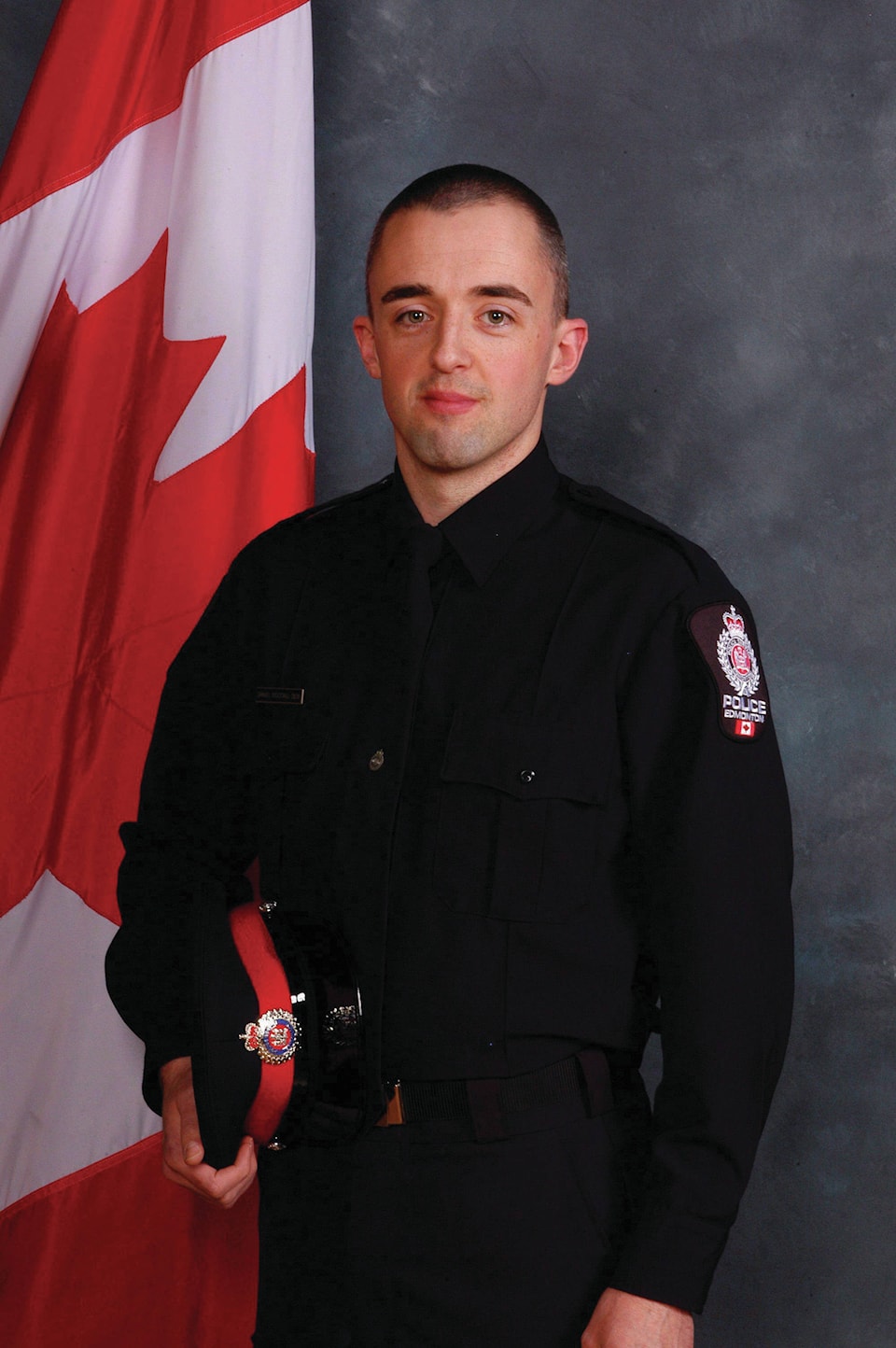EDMONTON — An investigative agency has found Edmonton police were blameless in an attempted arrest that resulted in the deaths of an officer and a suspect accused of criminal harassment.
“The decisions they made, to enter that residence that day to execute that arrest warrant, were all infinitely reasonable,” Susan Hughson of the Alberta Serious Incident Response Team said Tuesday.
“The same type of warrant is executed across this country all the time and it doesn’t end like this.”
The review agency was called in to investigate the death of Norman Raddatz. Const. Daniel Woodall also died and a second officer was badly injured.
On June 8, 2015, four officers from the Edmonton Police Service had arrived at his home to execute an arrest warrant. Raddatz, a 42-year-old refrigerator mechanic who lived alone, was being accused of making anti-Semitic posts online.
The complainant and Raddatz had been friends, but the relationship deteriorated over a money dispute and after Raddatz found out the man was Jewish.
Police showed up at Raddatz’s front door, but he refused to open it until police had a warrant.
“At the time, Raddatz appeared sober and calm,” Hughson said.
Police returned about an hour later with the document. They showed it to Raddatz through a window, but he still refused to open up.
The officers began using a battering ram and, on the third blow, shots tore through the door.
Woodall and another officer, both wearing body armour, were hit.
“The injuries to Const. Woodall were inescapably lethal,” said Hughson. “He would have died within a very, very, very brief time.”
Raddatz kept shooting at police. Dozens of rounds were fired, including more than 50 at nearby houses.
No police weapons were fired.
A tactical team was summoned. But its members never entered the home, because it had become apparent a fire had begun inside. Nor did police know were Raddatz was, so fire crews kept their distance.
Raddatz’s body was later found with a gunshot to the head. He had also shot his dog.
At least seven firearms, all with expired registrations, were found inside the house. A homemade bomb was also found, although it didn’t detonate in the flames.
Even though police knew Raddatz had guns, Hughson said they had no reason to take extra precautions.
“Unless you want to say that any time the Edmonton Police Service deals with somebody who may have firearms, it requires a tactical response. I don’t believe we’re there.”
Hughson said the report took three years to release, in part because Edmonton police had asked for an extra independent review of the officers’ conduct after the service’s own internal investigation.
Woodall, who was 35, was a member of the hate crimes unit. He was a husband and a father to two young boys. He and his family had immigrated to Edmonton from the United Kingdom nine years earlier. He had been a police officer in Manchester before he was recruited by the Edmonton service.
His death generated an outpouring of civic grief. Blue ribbons were tied to trees around the city and citizens lined the streets during his regimental funeral attended by thousands of officers from across Canada.
Edmonton has named a park and an elementary school in his honour.
A Facebook page linked to Raddatz revealed extremist views. It contained rants against police and courts as well as slurs against minorities. Neighbours described him as an unfriendly, unemployed divorced father who drank. A bank had foreclosed on his home.
